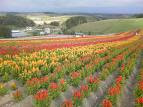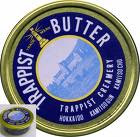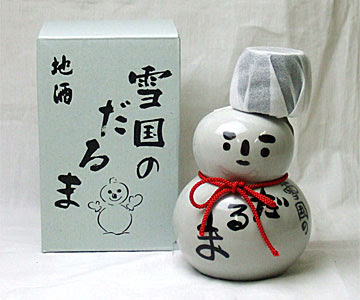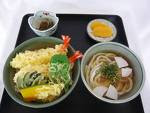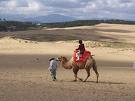::::::::::::::::::::::::::::::::::::::::::::::::::::::::::::::::::::::::::::::::::::::::::::::::::::
Leek (negi)
***** Location: Japan
***** Season: All Winter
***** Category: Plant
*****************************
Explanation
The Japanese word NEGI 葱 (ねぎ) includes a lot of varieties, according to its age and place of growth.
The onion is a round negi, tamanegi 玉葱 (たまねぎ)
Here we are concerned with the "long onion",
NAGANEGI 長ネギ、(長ねぎ, ながねぎ)
leek, long green onion, scallion, spring onion
Fruehlinegzwiebel
and the NEGI 葱 with its bigger stem.
Lauch, Porree
There is a bit of a confusion in the naming of this vegetable.
Also called
oriental bunching onion
(Allium fistulosum) Welsh onion
. . . CLICK here for Photos : Allium fistulosum !
shironegi, white leek, is often used in Kansai dialect for this plant.
. . . CLICK here for Photos : Allium grayi !
:::::::::::::::::::::::::::::::::::::::::::::::::::::::::::::::::::::::::::::::::::::::::::::::::::
fukanegi 深葱(ふかねぎ), nebuka 根深(ねぶか)
ki, 葱(き)
"like Chinese character ONE", hitomoji ひともじ
一
winter leek, fuyunegi 冬葱(ふゆねぎ)
leaves of the leek, hanegi 葉葱(はねぎ)
(often put on sushi rice)
field with leek, negibatake 葱畑(ねぎばたけ)
pulling leek, negi nuku 葱ぬく(ねぎぬく)
..... nebuka hiku 根深引く(ねぶかひく)
washing leek, negi arau 葱洗う(ねぎあらう)
washed leek, arainegi 洗葱(あらいねぎ)
rinse leek, sarashinegi 晒葱(さらしねぎ)
thin leek, yasenegi 痩葱(やせねぎ)
frozen leek, itenegi 凍葱(いてねぎ)
leek soup, negijiru 葱汁(ねぎじる)
leek soup, nebukajiru 根深汁(ねぶかじる)
leek in rice soup, negizoosui 葱雑炊(ねぎぞうすい)
vendor of leek, nebuka uri 根深売(ねぶかうり)
Akuminegi, Akumi negi 飽海葱(あくみねぎ)
................... from special areas:
Akuminegi, Akumi negi 飽海葱(あくみねぎ)
Leek from Akumi, a town in Tohoku, Yamagata pref.
fugu negi 河豚葱/ふぐねぎ /フグネギleek for globefish dishes
fugu is quite popular in Shimonoseki, where they grow a special kind of very thin leek, almost like chives, to serve with the fish
yasuoka negi 安岡ねぎ
Speciality of Yamaguchi.
. . . CLICK here for Photos !
Fukayanegi, Fukaya negi 深谷葱(ふかやねぎ)
. . . CLICK here for Photos !
One of the mostly grown varieties along the river Tonegawa. With a rather sweet taste. Full of Alicin, good for your health.
Kujoonegi, Kujoo negi 九条葱(くじょうねぎ)
Leek from Kujoo, Kyoto. An important "Vegetable of Kyoto".
They have a lot of thick juice and come in different thickness, according to the earth they are grown in.
. . . CLICK here for Photos !
:::::::::::::::::::::::::::::::::::::::::::::::::::::::::::::::::::::::::::::::::::::::::::::::::::::
Iwatsukinegi, Iwatsuki negi 岩槻葱(いわつきねぎ)
. . . CLICK here for Photos !
from Iwatsuki town, Saitama.
It has been out of use for many years but now revived by some diligent farmers. It is a special leek with 10 to 20 stems growing from the same stem. The white stems are about 20 cm long, and the soft green leaves are also eaten. It tasts rather sweet when cut fresh and put on a grill, the whole white and green plant.
The town uses this leek to revitaize the region,
"negiwai no machi" 「ぶらり岩槻観光『ねぎわい』マップ」.

They have a map with stores that sell special leek dishes.
Raw with white miso paste, negi nuta.
Mixed in yakisoba fried noodles and even baked into pie or a mix of leek and miso as a paste inside a bread bun.
:::::::::::::::::::::::::::::::::::::::::::::::::::::::::::::::::::::::::::::::::::::::::::::::::::::
Nissatonegi, Nissato negi 新里葱(にっさとねぎ)
. . . CLICK here for Photos !
Senjuunegi, Senjuu negi 千住葱 leek from Senju, Tokyo
They are especially sweet and juicy and welcomed by gourmet cooks. Now mostly from Kita-Senju. It is auctioned off in special auctions, the only vegetable to have this honor in Japan.
You can eat them as a simple tempura without any condiments.
. . . CLICK here for Photos !
Senjunegi 千寿葱
Shimonitanegi, Shimonita negi 下仁田葱(しもにたねぎ)
leek from Shimonita, Kanto
King of the Negi, single stalk Japanese bunching onion. Gets sweeter when cooking.
The short and fat white root makes the Simonita Negi look more like a leek than a scallion. The Shimonita Negi is popular throughout Japan, but particularly so in its place of origin, Shimonita Town, famous for its produce.
. . . CLICK here for Photos !
Shimouekinegi, Shimo-Ueki Negi 下植木ネギ
from Isesaki town, Gunma prefecture
They are very thick and large and all parts can be eaten. The white part is about two fingers wide, the green leaves up to 50 cm long and the part in the ground swollen where the thin roots sprout. The seeds are taken every year to produce new plants of the same high quality, supervized by a group of farmers.
Local people even put them on pizza.
. . . CLICK here for Photos !
Yagirinegi, Yagiri negi 矢切葱(やぎりねぎ) Edo
Yagiri no Watashi was a famous exit road of Edo.
矢切の西蓮寺. 江戸川土手. 葱が多く植えられ特有の匂いに包まれる.
. . . CLICK here for Photos !
leek is good for your health, it warmth the body, recovering from fatigue and enhances the metabolism. It also contains vitamins, iron, calcium and kalium.
::::::::::::::::::::::::::::::::::::::::::::::::::::::::::::::::::::::::::::::::::::::::::::::::::::::::::::::::::::::::::::::::::::::::::::::::::::::::::::::::::::::::::::::::::::::::::::::::::::::::::
aonegi, ao-negi あおねぎ / 青葱 green leek is preferred in West-Japan
shironegi, shiro-negi しろねぎ / 白葱 / 白ネギ white leek is preferred in Kanto and the north.
. . . CLICK here for AO NEGI Photos !
. . . CLICK here for SHIRO NEGI Photos !
akanegi, aka-negi あかねぎ / 赤ねぎ red leek
local variety of Japanese welsh onion, red in color
bannoonegi, bannonegi, banno negi 万能ねぎ, 蕃納葱
very thin variety of leek
leafy leek.
http://www.e-gohan.com/ingredient/182.html
. . . CLICK here for Photos !
me-negi めねぎ spring onion
Frühlingszwiebel
negi - Lauch, Porree
neginuta ねぎぬた/ ネギヌタ leek with maguro and ika
nuta 沼田 . from Tochigi prefecture
negima 葱鮪 dishes with leek and maguro tuna fish
::::::::::::::::::::::::::::::::::::::::::::::::::::::::::::::::::::::::::::::::::::::::::::::::::::
asatsuki あさつき 浅葱, chives, Schnittlauch
hiru 蒜 includes leek, onions and spring onoins. Old name for the vegetables of the yurika.ユリ科の多年草
nobiru 野蒜 leek, Allium grayi. Chinesischer Lauch
nira, araragi 韮 Chinese leek. Allium grayi. „Chinesischer Schnittlauch“
::::::::::::::::::::::::::::::::::::::::::::::::::::::::::::::::::::::::::::::::::::::::::::::::::::
nira, araragi 韮 leek. Allium grayi
„Chinesischer Schnittlauch“

nira 韮 (にら)
... kamira かみら、mira みら
futamoji ふたもじ "two Chinese characters"
this is with respect to normal leek, which was called "hitomoji 一文字" in the elegant language of the court cooking ladies, already in the Heian period.
kigo for mid-spring
nira no hana 韮の花 にらのはな
kigo for late summer
nira zoosui 韮雑炊(にらぞうすい)rice porridge with leek
kigo for all winter

kinira, ki-nira 黄韮 / 黄ニラ yellow nira leek
speciality of Okayama. It is harvested and dried in the sun during autumn and winter. It has a delicious fragrance and can be added to many Japanese dishes to improve the taste.
The first crop of green nira is harvested, then the plot covered with sheet to keep it in the dark and the second crop is let grow, the yellow variety this time.
. . . CLICK here for Photos !
- - - and a soy sauce with it

Specialities from Okayama
In some parts of Misakicho town it is grown in the dark of old mine shafts.
Momotaro nabe 桃太郎鍋 hodgepodge with yellow leek
ki nira donburi 黄ニラどんぶり bowl of rice with yellow nira
*****************************
Worldwide use
*****************************
Things found on the way
Leeks (Allium ampeloprasum var. porrum (L.) or synonym Allium porrum) are just one of many vegetables in the onion family. Cultivated from wild leek , it is closely related to elephant garlic and Kurrat (from Egypt) (all these are Allium ampeloprasum subspecies) and further related to chives and ramsons.
Leeks are commonly called (der) Lauch or (die) Porree in German and are tall, thick plants with straight, alternating leaves and non-bulbing roots. Farmers bury the sets (little plants) deep to blanch as much of the stalk as possible, but all parts of the leek are edible. They are usually about 1 inch in diameter, but can be eaten smaller or larger. They taste like a mild onion and garlic mix. They often have a sharp bite when raw, but are sweet when cooked.
Leeks have been used in Germany since the Middle Ages. Before that, people used wild garlic called ramsons or "Bärlauch" (Allium ursinum) for food and medicinal purposes for at least 5000 years. Ramsons grow wild and is gathered in May. Germans cook a cream soup (roux base) with it or use it in soft cheese spreads.
Leeks are famous for vichyssoise, a French potato leek soup and are always in a Suppengrün bundle, to be used as an herb. They are used in place of onions in many dishes and casseroles.
Another leek relative shows up in North America and is known as ramps, ramson or wild leek (Allium tricoccum). It is used in Appalachian cuisine and in Pennsylvania, where festivals are held each year in its honor.
Clean leeks by slitting them down the side and rinsing the dirt out of the rings under running water. Trim ends and slice or chop. Try cooking leeks in fat (or bacon grease) until soft and adding cream, salt and pepper for a side vegetable.
Pronunciation: Lauch - "Lauw-ch" (gutteral "ch"), Porree - "Pour-ay"
Also Known As:
(der) Lauch, (die) Porree, Breitlauch, Sommerlauch, Winterlauch, Borree, Welschzwiebel, Gemeiner Lauch, leek (English)
Common Misspellings: poree
source : germanfood.about.com
:::::::::::::::::::::::::::::::::::::::::::::::::::::::::::::::::::::::::::::::::::::::::::::::::::::
ネギの種類 Types of NEGI
青葱 aonegi, green negi
mostly in the Kansai area
九条葱(京野菜)
万能葱
谷田部ネギ
観音ネギ
ワケネギ(わけねぎ) 株分れ(分けつ) しながら成長する葉ねぎ
白葱 shironegi, white negi
mostly in the Kanto area
深谷ねぎ
下仁田ネギ
ポロねぎ 地中海料理などで普通に使われるネギ。
曲がりねぎ(白葱) magarinegi , bent negi (white negi)
一関曲がりねぎ(岩手県一関市)
仙台曲がりねぎ(宮城県仙台市)
横沢曲がりねぎ(秋田県大仙市)
阿久津曲りねぎ(福島県郡山市)
その他 Others
越津ネギ
愛知県発祥。日本の東西の中間だけあり、根の部分も葉の部分も丁度同じぐらい長さで白葱と青葱の中間にあたる。
徳田ねぎ
岐阜県特産。白葱と青葱の両方の特徴を持つ。
© More in the Japanese WIKIPEDIA !
A proverb
鴨が葱を背負ってくる kamo wa negi o seotte kuru
"Ducks come with a leek on their back"
When leek is put in a hodgepodge of duck meat, it takes away the strong flavor and makes the dish more pleasant. "Two good things follow each other".
or
kamonegi, a gullible person.
:::::::::::::::::::::::::::::::::::::::::::::::::::::::::::::::::::::::::::::::::::::::::::::::::::::
There are quite a few
traditional Japanese colors named NEGI.
moegi iro 萌葱色もえぎいろ #006e54
usu moegi 薄萌葱うすもえぎ #badcad
mizu asagi 水浅葱みずあさぎ #80aba9
sabi asagi 錆浅葱さびあさぎ #5c9291
asagi iro 浅葱色あさぎいろ #00a3af
hana asagi 花浅葱はなあさぎ #2a83a2
toki asagi 鴇浅葱ときあさぎ #b88884
If you can not see them properly, go to this LINK
and input 葱 .
source : colors named 葱
. asagi あさぎ - 浅黄 - 浅葱 hues of light yellow, green and blue .
*****************************
HAIKU
negiboozu
negi boozu -
my neighbour plants
a few more
Gabi Greve, Spring 2010
. Welsh Onion Head (negi boozu 葱坊主)
::::::::::::::::::::::::::::::::::::::::::::::::::::::::::::::::::::::::::::::::::::::::::::::::::::
Yosa Buson 与謝蕪村
was very fond of leek, especially from Koshigaya 越谷ネギ.
冬ざれや小鳥のあさる韮畠
fuyuzare ya kotori no asaru nirabatake
withering plants in winter . . .
little birds search food
in the nira leek fields
.................................................................................
葱買うて枯木の中を帰りけり
nebuka katte kareki no naka ni kaeri keri
I buy some leek
and then walk home
under bare trees . . .
Here Buson contrasts the brown dreary color of the withered trees and the fresh green he carries home to his wife and children for a delicious hot leek soup.
.................................................................................
うら町に葱うる声や宵の月
ura machi ni negi uru koe ya yoi no tsuki
in the nearby village
the voice of the leek sellers ...
moon of tonight
.................................................................................
. WASHOKU
MORE
discussion about haiku with leek
.................................................................................
There is also a special ramen soup with extra leek in memory of Buson
Buson Raamen + negi 蕪村ラーメン+ねぎ Buson Ramen
. . . CLICK here for Photos !
Buson soba 蕪村そば noodle soup with extra leek
Buson-An sells
negi miso senbei 蕪村庵のねぎみそせんべい
rice crackers with Kujo negi

ねぎみそ煎餅
*****************************
Related words
kigo for early autumn
sanran 山蘭(さんらん)"mountain leek"
(yama araragi)
hiyodoribana 鵯花 ひよどりばな "bulbul flower"
zawa hiyodori 沢ひよどり(さわひよどり)
Eupatorium chinense
. . . CLICK here for Photos !
::::::::::::::::::::::::::::::::::::::::::::::::::::::::::::::::::::::::::::::::::::::::::::::::::::
kamo 鴨 duck
Duck (kamo) KIGO
aigamo あいがも【合鴨】call duck
Anas platyrhyncha var. domestica
::::::::::::::::::::::::::::::::::::::::::::::::::::::::::::::::::::::::::::::::::::::::::::::::::::
Edo Yasai, Edo dentoo yasai 江戸伝統野菜
Traditional vegetables of Edo
WASHOKU : Regional Japanese Dishes
***** WASHOKU : INGREDIENTS
[ . BACK to WORLDKIGO TOP . ]
:::::::::::::::::::::::::::::::::::::::::::::::::::::::::::::::::::::::::::::::::::::::::::::::::::::


